The load-bearing capacity is the quality of the soil layer, which allows it to withstand, to one degree or another, external loads. The design soil resistance is determined by the average pressure at the border of the base of the foundation and the ground, as a result of which there are no shifts and subsidence of the structure. The ability to withstand the load can be calculated, actual and permissible.
What is the bearing capacity of the soil
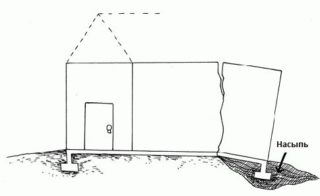
The bearing capacity limit must be greater than the actual load on the base. Conditional calculation is made for the selected unit of area so that deformations do not occur in the soil and the building. Geological surveys are carried out to determine the type of soil by taking samples from wells at the construction site.
The load-bearing characteristic depends on the circumstances and factors:
- soil type;
- the thickness of the layer, the depth of its occurrence and strata of various types;
- properties of the lower layer under the test soil;
- marks of standing of the soil liquid;
- the depth to which the ground freezes;
- density of the base.
Soil moisture changes the properties of the soil, therefore, one breed is characterized differently depending on the saturation with liquid. The soil easily absorbs liquid, and any layers in contact with water are considered saturated with moisture. The flow rate increases and the resistance value decreases, with the exception of coarse rocks, coarse and medium sands.
The density coefficient indicates the porosity of the soil. The earth includes solid elements, between them there are air cavities that are filled with water or air under different circumstances. The most durable are dense soil layers with a small number of voids.
Before drawing up the project, they examine the thickness of the earth below the foot of the structure support. The density increases with deepening, because at the top there are loose layers, and the underlying rocks are older, more reliable and more compact.
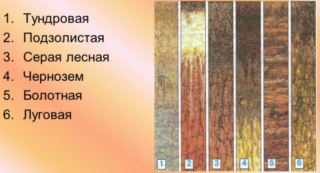
Building rules (SP) for laying a foundation, taking into account resistance:
- do not design supports at the boundary of two different soil layers or near them;
- a horizontally located strip of one breed is considered ideal;
- the soil will not be able to carry a large load near the ground liquid mark, on steep slopes;
- on terrain with low strength indicators, an additional increase in bearing capacity is carried out.
The characteristics are increased by compaction and the introduction of chemical ingredients. The first method involves driving small piles to improve accuracy and reduce voids. The second method involves the introduction of artificial additives to enhance the connectivity between individual soil elements.
Determination of the parameter before erecting the foundation
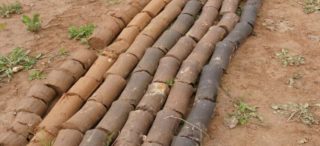
Construction surveyors examine the soil to determine the characteristics of the earth, designers and constructors find the design soil resistance of the foundation based on the information received. Rock samples are taken at the cut of the wells, at the lower end of the pile. In difficult cases, drawings of geological sections in the area of the construction site are performed. The cutting and excavation method is determined on the basis of the transverse plan.
To find the bearing capacity (R) apply the formula: R = P (1 + K (B -100) / 100) (H + 200) / 2 200 - for a depth less than two meters, and the expression R = P (1 + K (B -100) / 100) + K2 Y (H - 200) - when structures are immersed for more than two meters, where:
- P - resistance to compression along the central axis, found in the table, the value depends on the type of soil;
- K - coefficient from tables, correction for rock type, 0.125 - for stable varieties (sands and coarse-grained), 0.5 - for loams, sandy loams and alumina;
- K2- used for calculations in stable layers;
- Y - the coefficient is needed to find the average calculated value of the specific gravity of soils from the surface to the bottom of the foundation;
- B - width of the foot of the support element;
- H - the size of the deepening.
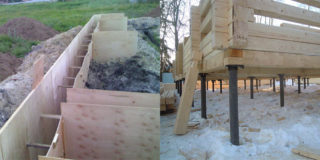
Find the actual resistance capacity in kg / cm² and compare the value with the required value. If the second indicator turns out to be larger, the structure of the foundation or its parameters are changed, for example, the foot area or the height of the foundation.
The freezing mark is taken according to the reference tables for each construction region separately. Subdivision by category is given in GOST 25.100-2011 “Soils. Classification". The depth of laying the supports is set at the level of the stable formation, below the freezing point.
You can find out the type of soil yourself. Basic soils:
- clayey;
- coarse;
- sandy;
- rocky.
A detailed finding of the design resistance is described in SP 22.133.30-2016 "Foundations of buildings and structures". This document contains the required coefficients for the calculation.
How to determine the type of soil yourself
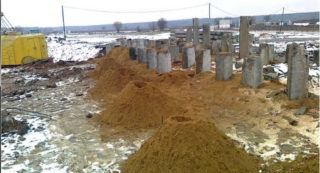
Clays and sands prevail on the territory of Russia, in marshy regions there are peat soils with a large index of subsidence, and in the mountains, construction is carried out on rocks. Initially, the well is drilled during the most humid times, for example, in the spring or during the rainy season. A screw drill is used to maximize structure preservation.
For the house, trunks are made according to the plan of the envelope - 4 are opened in the corners and one is placed in the center. For a complex structure, the exact location is chosen under the load-bearing elements and in the center of each wing of the house. The tool is deepened 0.6 m below the freezing horizon. During drilling, samples are taken from each encountered formation.
Determine the moisture content of the earth by eye. The drilled well is closed with foil and waited for 5 - 7 days. If there is no water in all workings, the level of soil moisture is lower - you can build a building without first draining the liquid.
If water appears at the bottom, the level of the soil liquid is almost nearby, the layer is classified as water-saturated. The plasticity and moisture content of the clay rock is determined by the entry of the shovel. If the blade sticks easily and the clay sticks to the surface, the soil is considered wet and pliable. If the shovel does not penetrate the soil, the clay is classified as a dry species.
Density is not constant. The deeper layers are always denser than the wellbore samples. When calculating, layers that are below the 1.0 m mark are taken as dense layers. Geological surveys do not always take place in the conditions of private construction, therefore, the bearing capacity for simplified calculations is taken at the level of 2 kg / cm².
The connectivity of the soil is checked in a pit with a height to the depth of the foundation base during the settling of the workings to check for moisture. Cut the soil obliquely and watch when the shedding of the walls stops. An angle less than 45 ° indicates a stable category, and more - about the buoyancy of the soil.
The rock fluidity index is especially important for clays and loams, because they often sag when exposed to water.
Bearing capacity of clay and sandy soils according to SNiP
It is easy to distinguish clay and sand by touch. In clean sand, grains of sand are clearly visible, they are also felt when rubbed. In sands of a coarse fraction, the particles reach a size of 0.25 - 5 mm, and an average size of 2 mm.The sandy loam contains up to 10% clay, the dry rock crumbles, and the rolled ball crumbles into dust. Loam contains 10 - 30% clay and is plastic compared to sandy loam. Clay is the most plastic, while the rolled ball, when pressed, becomes a cake without cracks at the edges.
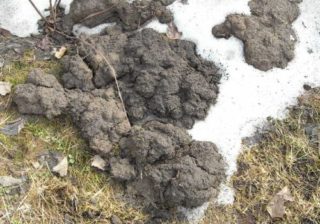
The SNiP contains the following standard bearing capacity of soil layers in kg / cm²:
- coarse gravelly sand - dense 6, medium-dense 5;
- average sand fraction by size - 5 and 4, respectively;
- fine dry sand - 4 and 3;
- fine wet sand - 3 and 2;
- dry sandy loam - 3 and 2.5;
- wet and plastic sandy loam - 2.5 and 2;
- dry loams - 3 and 2;
- wet loams - 3 and 1;
- dry clay - 6 and 2.5;
- plastic clays - 4 and 1.
Rocky rock is a stone that resists moisture and freezing. Such soils can serve as the foundation for private buildings if they are built in the appropriate area. Sands freeze to a shallower depth than moisture-saturated layers, because do not accumulate moisture, but conduct it. They are perfectly compacted by ramming and prevent the feet from getting wet.
Clays liquefy in a humid environment and freeze to a considerable depth, therefore they swell and push the foundation up. Sandy loams behave when wet and freezing, depending on the percentage of sandy or clay inclusions.
Peat is not suitable for the construction of buildings, because contain a lot of liquid, the level of soil moisture is high. For them, only deep piles are used.








